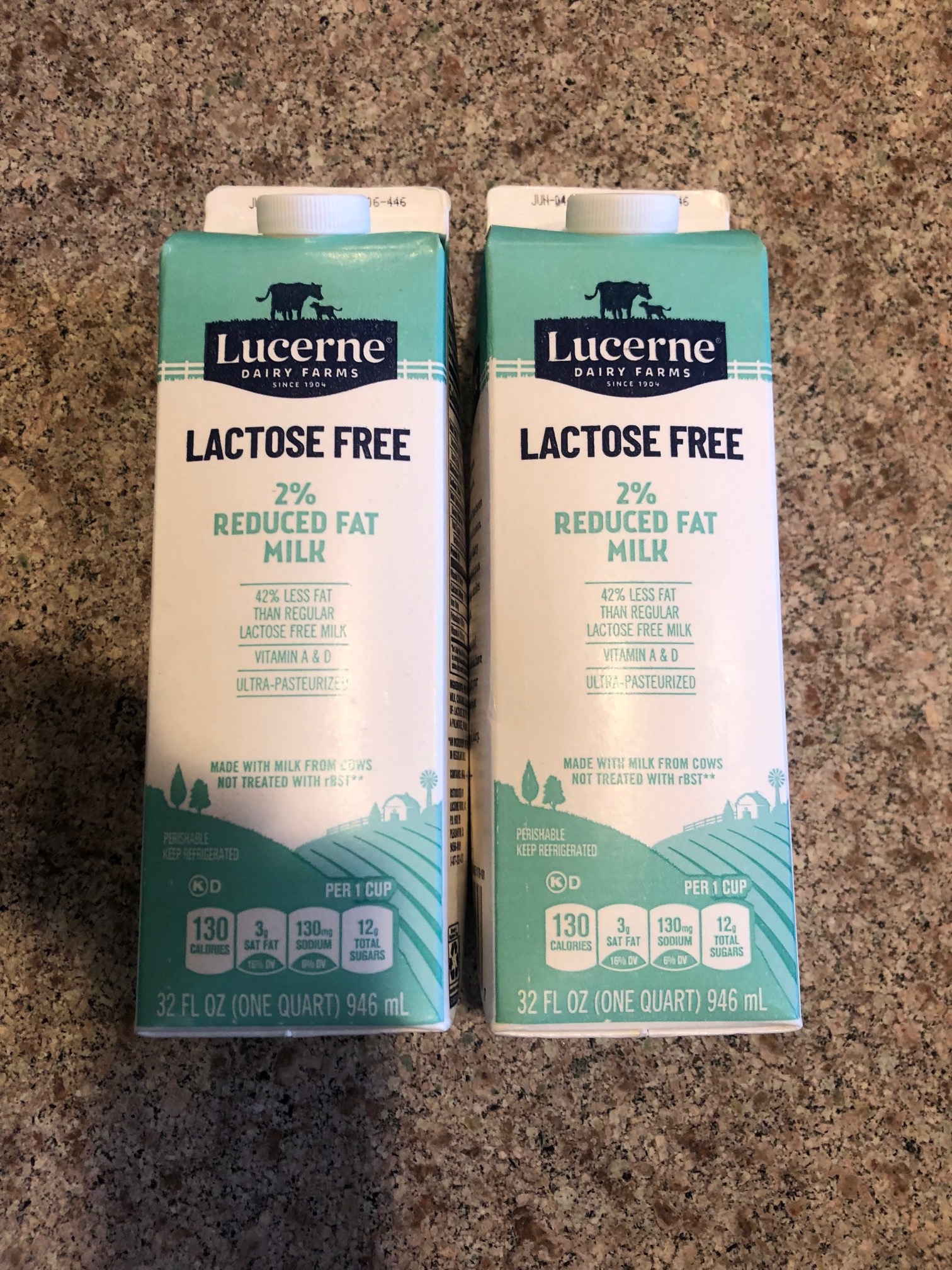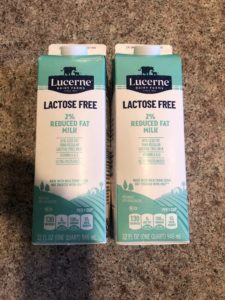

Former co-blogger Bryan Caplan (how I miss his presence on EconLog) pointed out in April 2020 that the true cost of living in 2020 rose substantially more than the recorded Consumer Price Index stated. The reason is simple: variety fell and it took more time to get a given number of items at stores.
I’ve been experiencing that recently. My wife needs a particular kind of milk to make her morning latte. I used to be able to get her latte at Starbucks but her situation has changed and they don’t use the kind of milk she needs.
The surefire milk is shown in the picture. It’s sold at Safeway and Andronico’s but nowhere else that we can find. And whether it’s there when I go to the store is always a percentage shot. At least 20 percent of the time, I come home without the milk.
I went to Safeway yesterday morning to get some items and they were out of that particular milk. So I went to Andronico’s and found it. The trip to the store and the time in the store took at least an extra 15 minutes, probably more like 20. At any reasonable estimate of my time value, therefore, this milk was extremely expensive.
There’s also an historical point to be made here. Nixon imposed a 90-day price freeze on August 15, 1971. He later relaxed the freeze but kept economy-wide price controls. In 1973 he got rid of many of the price controls. (He didn’t get rid of the price controls on oil and gasoline, an omission that caused huge problems and, arguably led to a new government department, the Department of Energy.) When economists look at various time-series data, few of them note that 1973 was a strange year because of the price controls. With many price controls being eliminated, prices shot up, but the real cost of getting many goods that had been in short supply actually declined or rose modestly. Failure to take account of that can lead you to some seriously wrong conclusions.
Note: For more on how the CPI normally overstates inflation, see Michael J. Boskin, “Consumer Price Indexes,” in David R. Henderson, ed., The Concise Encyclopedia of Economics.

READER COMMENTS
Jon Murphy
Apr 6 2022 at 2:14pm
I’ve been thinking more and more about the cost of time lately. One thing the literature routinely points out is that time costs fall heavily on low-income people. Relative to benefits, the cost of their time is very high indeed. For example, reducing the number of times one needs to go to WIC offices dramatically increases take-up. In short, low-income people are very sensitive to changes in the time-cost of actions.
Consequently, this indicates that the costs of price controls (in terms of shortages and non-price rationing) likely falls heaviest on the low-income.
In absolute terms, going to get the milk is very expensive for David. But (as evidenced by the fact he bought it), the benefits exceed the costs. For the low-income person, the costs are likely higher (relative to the benefits), so they would not go shopping for the milk.
john
Apr 12 2022 at 3:17pm
“I’ve been thinking more and more about the cost of time lately. One thing the literature routinely points out is that time costs fall heavily on low-income people. Relative to benefits, the cost of their time is very high indeed. For example, reducing the number of times one needs to go to WIC offices dramatically increases take-up. In short, low-income people are very sensitive to changes in the time-cost of actions.
Consequently, this indicates that the costs of price controls (in terms of shortages and non-price rationing) likely falls heaviest on the low-income.
In absolute terms, going to get the milk is very expensive for David. But (as evidenced by the fact he bought it), the benefits exceed the costs. For the low-income person, the costs are likely higher (relative to the benefits), so they would not go shopping for the milk.”
It doesn’t seem like that could be their time being more expensive. It’s almost definitionally not more expensive. It sounds like the goods are more expensive to them possibly because their transportation options are limited, or possibly they just have a very large preference for leisure time and/or extremely high personal discount rate. So just like they don’t invest time in gaining more skills that would make them more money because some combination of they would prefer the leisure time and/or they don’t value the future benefits much because of their high discount rate; they don’t spend the extra time (assuming it is the same amount of time and effort) because they value their leisure time more or they don’t value the future consumption of milk as much.
Andrew_FL
Apr 6 2022 at 2:27pm
The problem is the same except much, much worse from 1942-1946. Probably more economists have made note of this than have 1973, but not by as much as would be warranted.
I think 1942-1946 is the more apt comparison because not only inflation was distorted. Virtually all economic statistics ceased to have their ordinary meanings and became severely misleading to any statistical analysis. This was the case and to some extent still is the case, from 2020.
Sightline
Apr 8 2022 at 9:30pm
You can only find that milk at Safeway and Andronicos because it’s the Safeway house brand. Your supply chain is single sourced!
David Henderson
Apr 12 2022 at 5:19pm
Exactly.
Phil H
Apr 9 2022 at 5:00am
While this is right, there’s a standard econometric worry about it. All economic figures are constructs, which reflect the underlying concept only to a limited extent. There are always corrections which you can apply to the standardized measurement. But applying corrections piecemeal often leaves you with less clarity than just sticking with one consistent (if imperfect) measure.
So, it’s clearly right that reduced choice is a form of stealth inflation. But by the same lights, increased choice is a form of stealth deflation, and (up until covid!) our choices were generally increasing.
On a separate note, China’s lockdown strategy is finally biting them in the ass: we are hearing that the price of food has gone up tenfold in Shanghai, and in fact people often cannot buy the food they want.
Grand Rapids Mike
Apr 12 2022 at 10:36am
BTW Lactose free milk is available at Kroger or Kroger owned stores like Marianoes in Chicago Area. But not at Jewel stores, which I find interesting
Comments are closed.